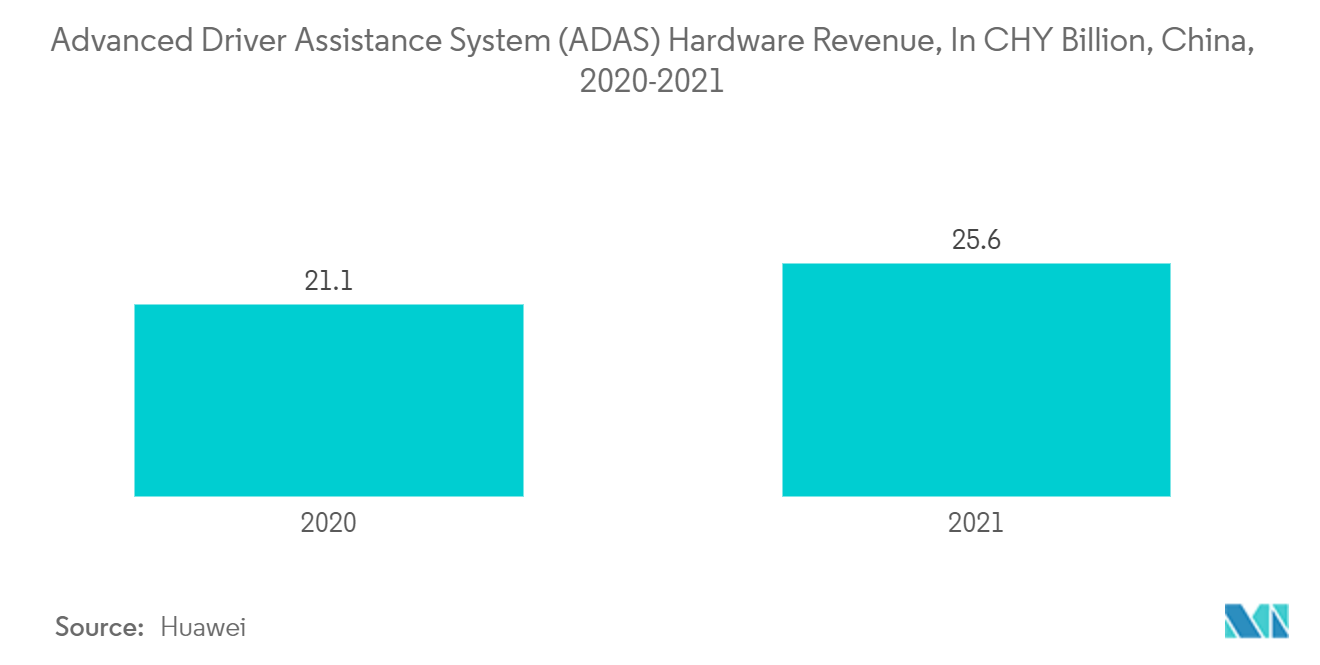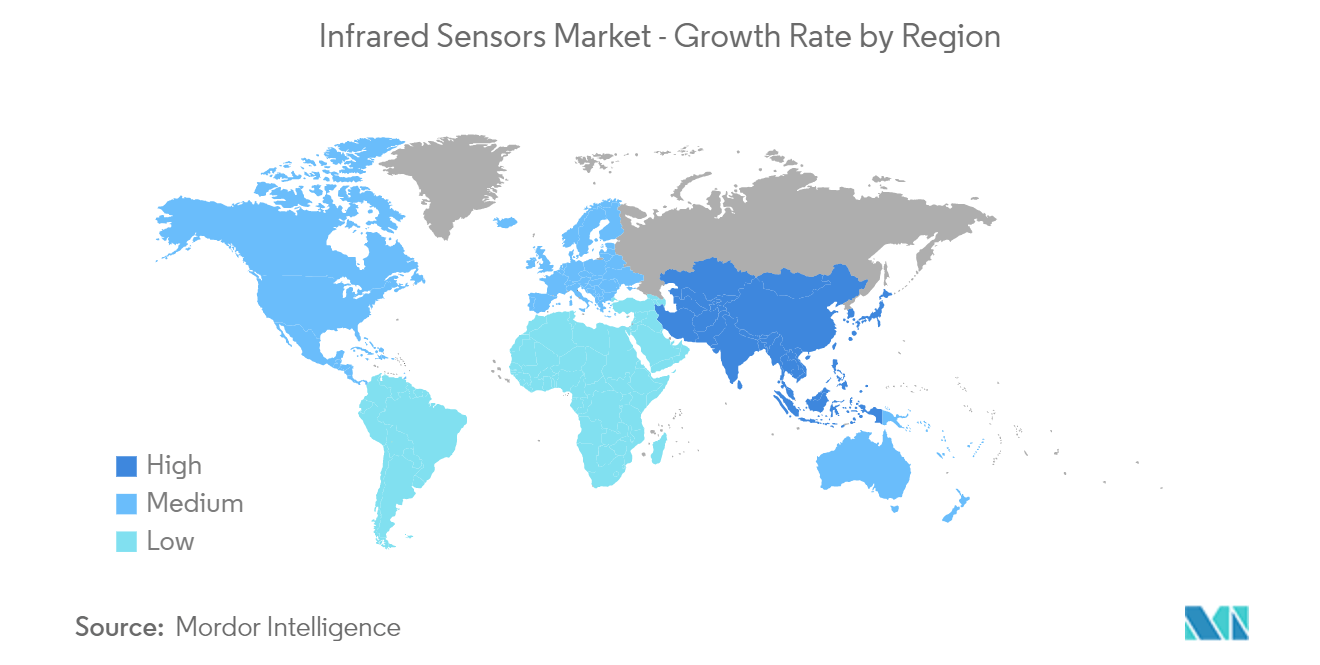Market Trends of Infrared Sensor Industry
This section covers the major market trends shaping the Infrared Sensor Market according to our research experts:
Near Infrared (NIR) To Hold Significant Market Share
- Near-infrared (NIR) imaging is growing in demand globally, typically replacing thermal or far-infrared (FIR) vision for night vision. Cameras comprising NIR sensors can detect the wavelengths of light directly adjacent to the visible light spectrum. Unlike thermal cameras, NIR cameras can detect photons like cameras in the visible light spectrum, just at a different wavelength. More detectable photons are in the NIR spectrum at night, making NIR cameras valuable for night vision.
- The European New Car Assessment Programme (Euro NCAP) has announced that it will compensate manufacturers that offer Child Presence Detection as a standard feature in new vehicles beginning in 2022 (for instance, sensing systems to monitor the safety of children left unattended in cars). Automakers and suppliers are under pressure to quickly and effectively implement sensing technologies, with the role and performance of NIR light sources gaining new significance within the vehicle. This factor is anticipated to boost the demand for the NIR sensors.
- When compared to thermal vision, NIR vision has been gaining high demand. Thermal vision only detects heat. It's not good at producing crisp, clear images to facilitate semi- or full autonomy. Also, the NIR sensors have been witnessing adoption in biomedical engineering.
- The development of infrared (IR) transparent electrodes (specifically in the near-infrared range) is crucial for improving the efficiency of specific optoelectronic devices and opening up applications in other emerging areas, like IR photodetectors, IR switching devices, sensors, and modulators for telecommunication. NIR (Near Infrared) applications are rising as demand for non-destructive, accurate, and rapid food quality and safety analysis is increasing. Consequently, NIR technology is continuously being upgraded to improve performance and make it more affordable for scientists and all stakeholders in the food supply chain.

Asia Pacific Market to Witness Significant Growth
- Asia Pacific is the fastest-growing market for infrared sensors, owing to the established electronics industry and increasing technological advancements in economies such as China, Japan, and South Korea. Also, the region is the largest producer and consumer of consumer electronics.
- Over the past few years, the region has been witnessing increasing Internet of Things (IoT) penetration and growing consumer preference toward better energy management systems. Factors such as these are driving the demand for smart home automation technology, which, in turn, boosts the demand for IR sensors. TVs, for instance, use an infrared sensor to decode the signals transmitted by remote control. According to techarch, a survey conducted in 2022 showed that smart TVs had the highest penetration rate among all the smart home devices at 73% in India, thus driving the demand for the infrared sensors market.
- Many enterprises in this region are spending on R&D to develop infrared sensors that could bring advancements in the packaging industry. For instance, the WG51S2, an infrared sensor developed by Yokogawa Electric Corporation, is used to measure and control the thickness of films and sheets to ensure product quality.
- Far infrared (FIR) gives vehicles complete, reliable detection of the road and its surroundings. Recently, according to the Department for Promotion of Industry and Internal Trade (India), the automobile sector in India saw an equity inflow from foreign direct investments worth approximately 1.6 billion U.S. dollars. The increased versatility of infrared sensors in cameras and autonomous automobiles drives the market's growth.
- The presence of key market players in Asia Pacific, rapid industrialization, primarily in manufacturing sectors, increase in demand for better security and monitoring systems, augmented application of infrared detectors in the residential and consumer electronics sector, and rise in government initiatives in the aerospace and defense sector has fueled the market growth.


